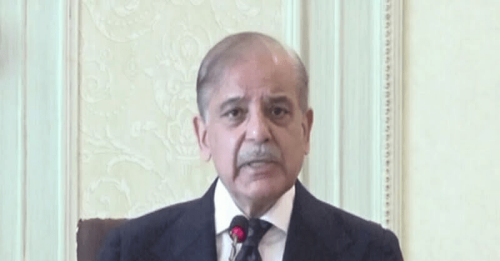
Frontier and the Uprising of 1857
The events of 1857 were full of epic grandeur, their incidences so complex and their consequences so vast that the British empire was shaken to its roots. John Lawrence and his team played a crucial role in the 1857 uprising and its aftermath. Wires flashed the news of the outbreak at Meerut when Lawrence was at Rawalpindi. As day succeeded day, and the local sepoys were augmented by the arrival of the mutinied regiments, the outlook assumed serious proportions for the British East India Company. From the very beginning Lawrence devoted all his energies to the employment of the resources of the Punjab in subduing Delhi. Lawrence expressed the most unbounded confidence in the immediate recapture of Delhi, “My impression is that,” he said, “on the approach of our troops, the mutineers will either disperse, or the people of the city will rise and open the gates.”
Ironically the position of Lawrence in the Punjab was quite unique. Just eight years back the fighting classes of the province, led by some of their most powerful chiefs, contested its possession with the British. Now, eight years later, Lawrence would have to call upon the same fighting classes to aid him in resisting the pretensions of the sepoys by whose assistance they had been conquered. Secondly, could he afford to risk the departure from the province of some of the English regiments which were there for its protection, in order to enable him to assist in the recapture of Delhi? The Punjab would, as a result, be dangerously denuded of trustworthy troops and the only solution was to raise more irregulars. In Saul David’s words, “with the survival of British India at stake, it was considered to be a risk worth taking.”
The first step taken by Lawrence in the general activity was sending off the Guides, which belonged to the Punjab Irregular Force, to Rawalpindi to join the movable column. Lawrence’s lieutenants at Peshawar in concert with General Reed, commanding the division, and Sydney Cotton, jotted down the heads of a plan for the formation of a moveable column consisted of the European and irregular troops; the scheme was approved by Lawrence.
Salman Bangash recounts the struggle of one man and his team to secure the Punjab and Frontier region from uprising during 1857
The main problem for them was how best to secure the Punjab with such a small number of troops. “Edwardes and Nicholson gave it as their opinion,” recalled Roberts, “that the only chance of keeping the Punjab and frontier quiet lay in trusting the Chiefs and people, and in endeavouring to induce them to side with us against the Hindustanis.” They undertook to communicate, regarding the raising of levies and fresh troops, with their friends and acquaintances along the border. In order to stop any disturbances in Punjab, Lawrence, after consulting the local military authorities, issued a proclamation to the sepoys in the Punjab, in which he warned them against raising the standard of revolt and its consequences, apart from this, the proclamation also mentioned rewards for their loyalties. But soon it became necessary to disarm the sepoys at nearly every station in Punjab. At Peshawar, the 64th Native Infantry, had been broken up and sent to join detachment of the more reliable irregulars at various stations in the Khyber Pass.
With the disarmament of the Peshawar garrison and the dispersal of the mutinous 55th regiment in May, Nicholson and Edwardes felt the Frontier to be reasonably secure. Even then, however, at nearly every large station there were groups of disarmed sepoys, ripe for revolt, who had to be guarded, and this was a grave addition to his toils and anxieties: it was accomplished, however, with success. As the exaggerated and embellished stories of the mutineers came north, there was considerable excitement among the tribes of the Frontier hills.
There were, however, some outbreaks of rebellion among the ranks of the sepoy. The first sign of real outbreak on the part of the sepoys occurred at Mardan, when the 55th Native Infantry, which had replaced the Guide corps at that station, rose in rebellion rather than surrender their arms, and rushed off to the hills of Swat. Nicolson pursued them and the uprising was crushed. To make them a lesson not to be forgotten, forty sepoys were blown up by cannon fire in front of both military and civilians. An eyewitness wrote of one punishment parade of a native unit, “the artillery officer waved his sword, you heard the roar of the guns, and above the smoke you saw legs, arms and heads flying in all directions.” Lawrence makes it clear that it was used not as an act of vengeance “but of deterrence, pour encourager les autres.” By timely securing of important places; John Lawrence made the province, which was to be the base of his operations, as secure as it could be, under the circumstances. But on the whole, the mutiny did not create too many problems at the Frontier. “The hillmen,” writes J.W. Spain, “considered the quarrel between the English and the sepoys none of their business.”
The most obvious threat for the British was from Dost Muhammad Khan, however both Edwardes and Nicholson were confident that he would honour the treaty recently signed with the British. Lord Roberts acknowledged Amir Dost Muhammad Khan’s neutrality without which it would have been very difficult for the British to maintain the Frontier’s security.
Herbert Edwardes also acknowledged Dost Muhammad Khan’s stance and the policy of non-interference.
Special care was taken by Lord Lawrence for the watch and ward of the long Frontier adjoining Afghanistan for several hundred miles, which had been deprived of some of its best troops for service in Delhi. This critical task too, he accomplished with total success. During May and June Lawrence received reports of disaster on a daily basis in most parts of Northern India, and he knew that beneath the outward calm there were signs of unrest and conflicting emotions among the population in his own province.
As news of the British forces in Delhi grew more and more unfavourable during June and July, Lawrence was calculating his options and steps to be taken in the event of disaster. Among other things he apprehended that it might become necessary to withdraw and retire from Peshawar, so that the large European force stationed there might be concentrated for the defence of the rest of the province. In a letter to Edwardes on June 9, 1857, John Lawrence advocated withdrawal and abandonment from Peshawar and the Trans Indus Frontier Region, in order to relieve British troops and loyal levies for the recapture of Delhi. He wrote:
I think we must look ahead and consider what should be done in the event of disaster at Delhi. My decided opinion is that, in that case, we must concentrate. All our safety depends on this. If we attempt to hold the whole country, we shall be cut up in detail. The important points in the Punjab are Peshawur, Meehan, and Lahore, including Umritsur. But I do not think that we can hold Peshawur and the other places also, in the event of disaster. We could easily retire from Peshawur early in the day. But at the 11th hour, it would be difficult, perhaps impossible.
Edwardes was surprised, therefore, to take delivery of such a letter from Lawrence in order to recapture Delhi. His proposal was to make a merit of necessity by inviting the Amir to hold the vale and the Trans Indus as an ally, with the promise of a permanent occupation once the crisis was over.
Edwardes, Nicholson, and Sydney Cotton replied in a joint protest against such a scheme. Edwardes’s reply was, “With God’s help we can and will hold Peshawur, let the worst come to the worst.” “Peshawar is the anchor of the Panjab, and if you take it the whole ship will drift to sea.” To the vigorous expostulations of his advisers came a peremptory order from the governor general that Peshawar was not to be abandoned. Finally on August 7 he received Lord Canning’s reply, ‘Hold on to Peshawur to the last.’ To relinquish, he believed, would cause the rebellion to spread to southern India; “If we now abandon territory,” Lord Canning said, “no matter how distant, it would be impossible that faith in the permanency of our Rule should not be shaken. The encouragement to join the league against us would be irresistible and immediate; its effect would be felt long before we should secure any material benefit from the force which would be set free by the abandonment.”
Lawrence believed and warned that if Delhi had not been taken, and if tension in the Punjab had been prolonged, inextricable misfortune would have befallen his administration. The Frontier tribes, would have marched upon half protected districts, and been joined by other tribes in the interior of the province. One military station after another would be abandoned by the British and thus he declared “no Englishman would for a whole generation have been seen in the Punjab, either as conquerer or ruler.”
Finally, troops were sent to Delhi from Peshawar under the command of Nicholson on June 14, and with him was his personnel bodyguard of Indian Frontier horsemen. “They came out of a personnel devotion to Nicholson,” wrote E.R. Wilberforce, of the 52nd Light Infantry. “They took no pay from the government; they recognised no head but Nicholson, and him they obeyed with a blind devotion and faithfulness that won the admiration of all who saw them. These men, some 250 in number, mounted on their wiry ponies, surrounded the Column like a web.” H.W. Bellew has stated that many of the troops raised in the Punjab for service against the mutineers were Pukhtuns. In a sense, he commented that “the victim of the Auckland was the saviour of Canning.”
The above excerpt is taken from the chapter ‘British Frontier Policy: The Local Quandary’
Excerpted with permission from
The Frontier Tribal Belt: Genesis and Purpose Under the Raj
By Salman Bangash
Oxford University Press
ISBN 978-0199403417
380pp.
Published in Dawn, Books & Authors, June 26th, 2016















































Dear visitor, the comments section is undergoing an overhaul and will return soon.